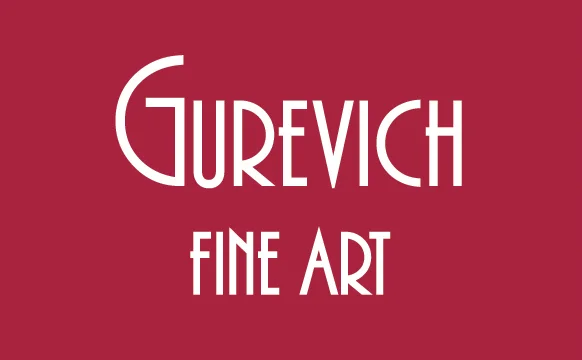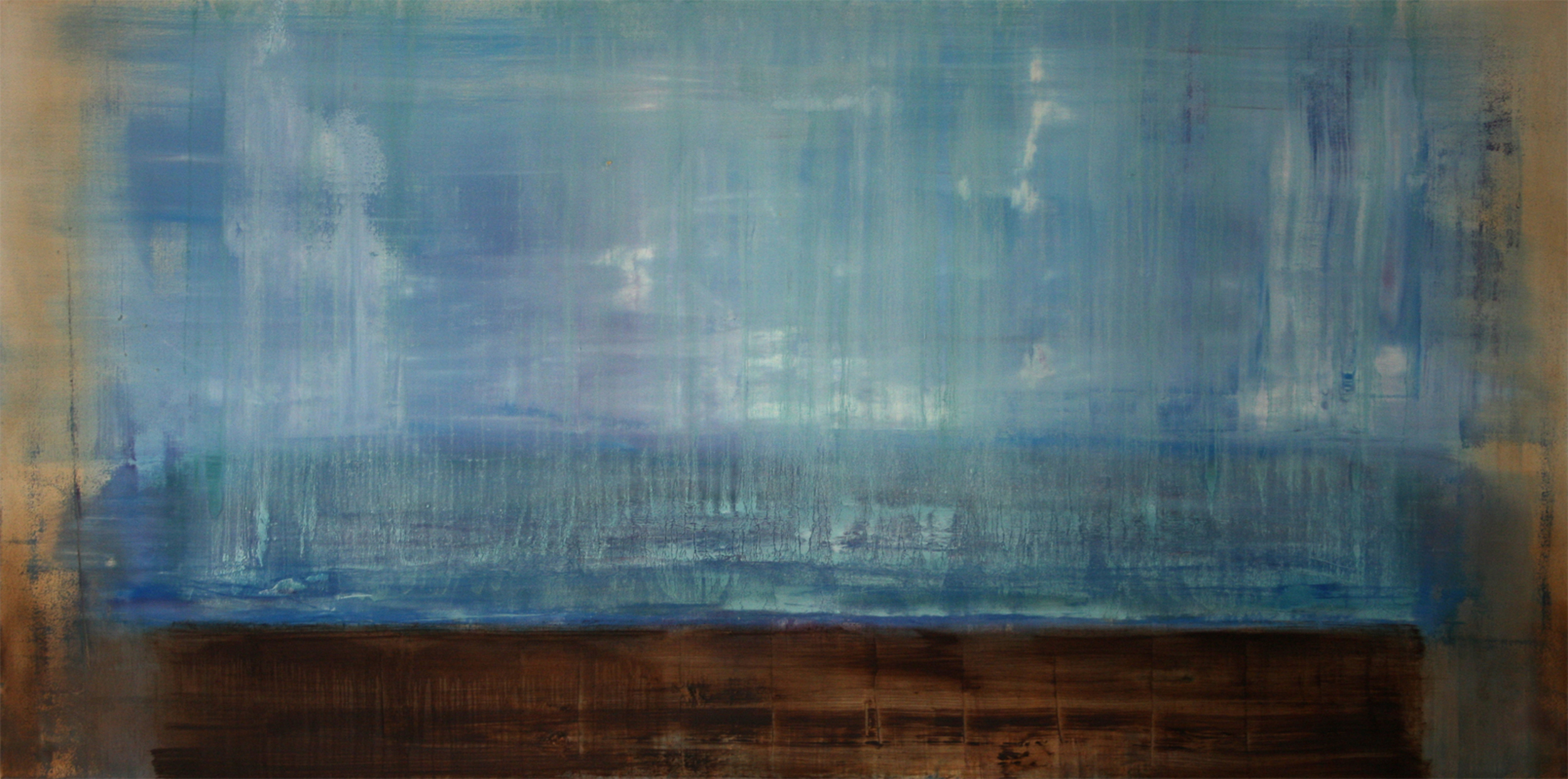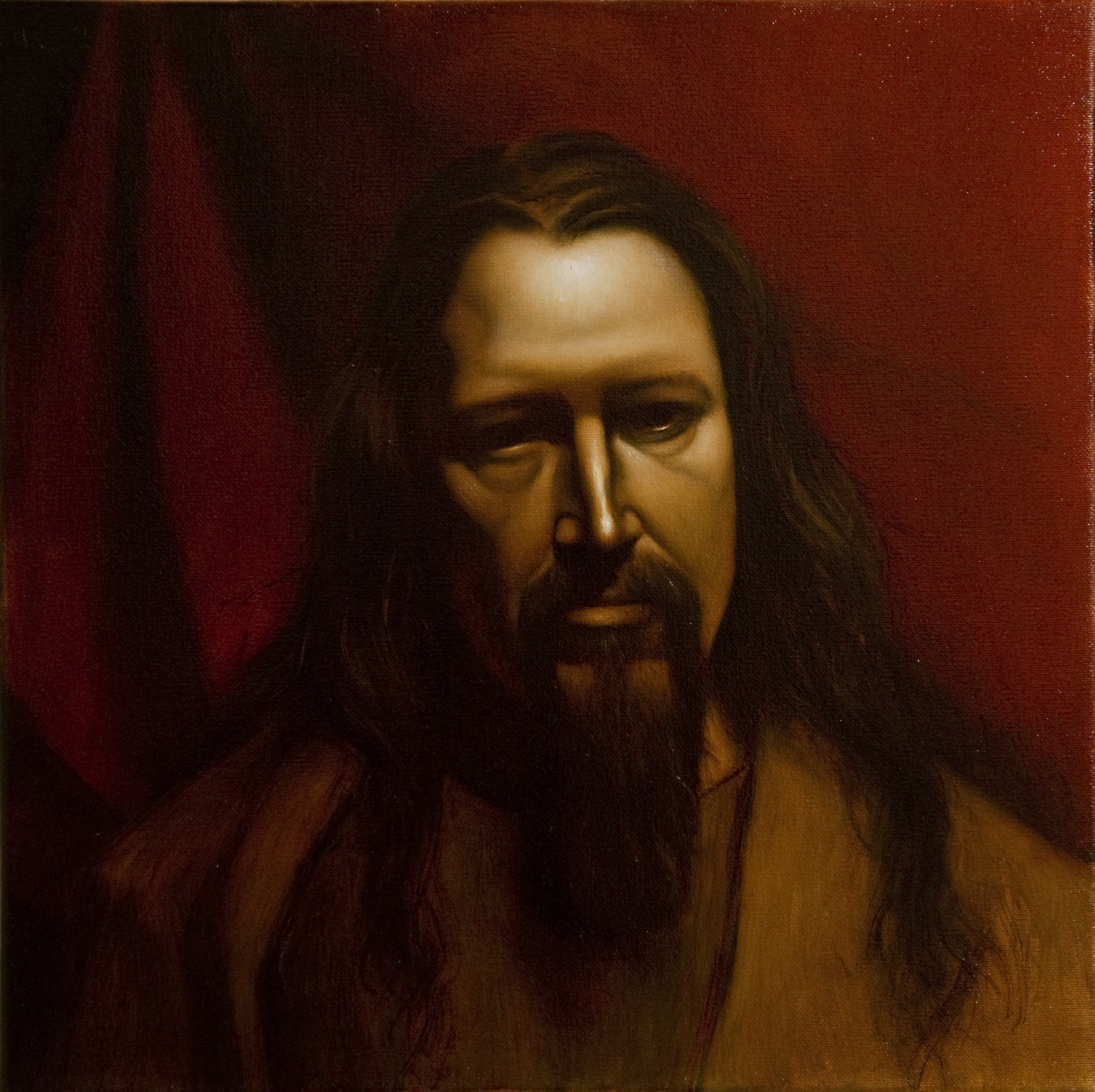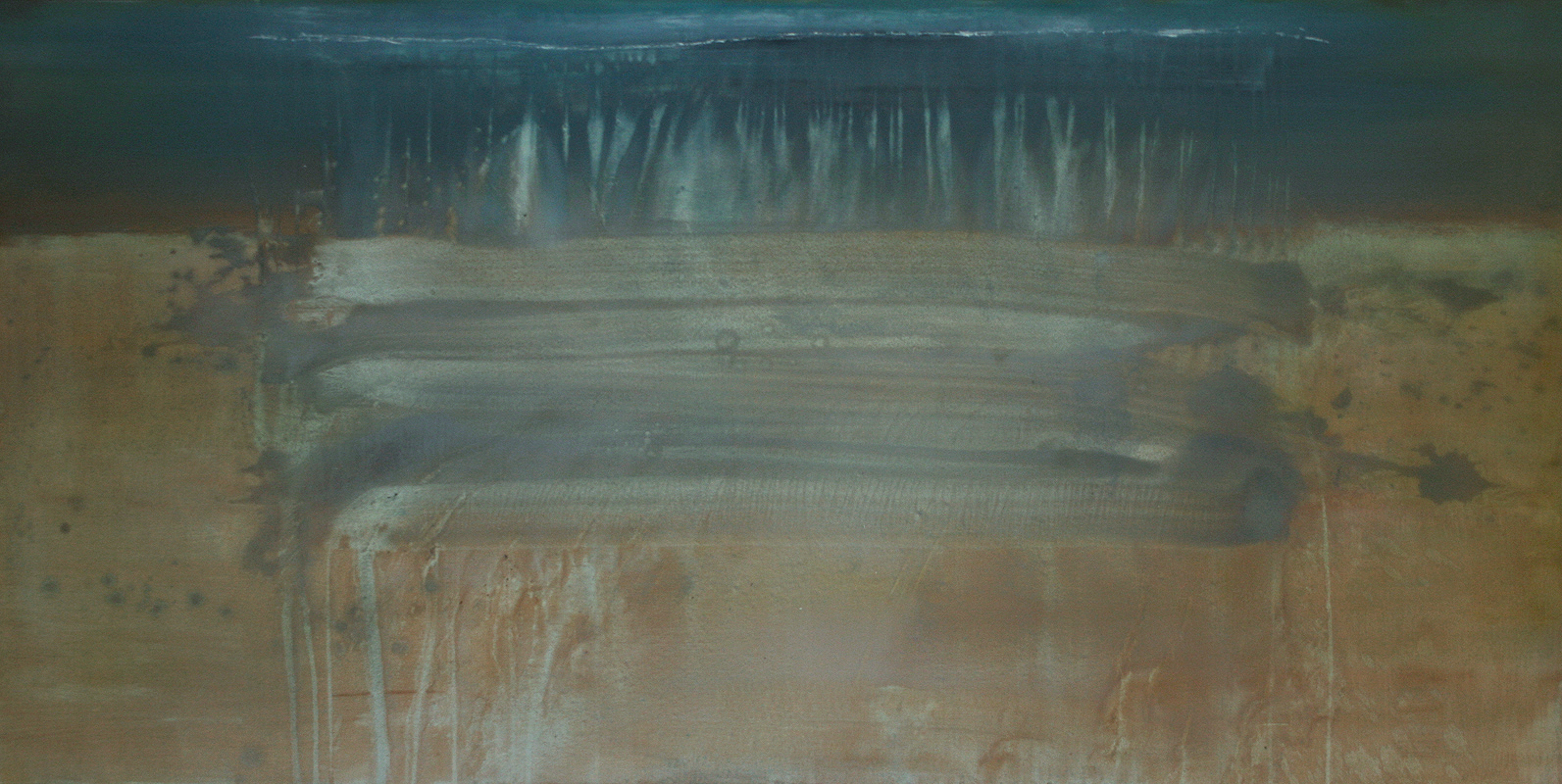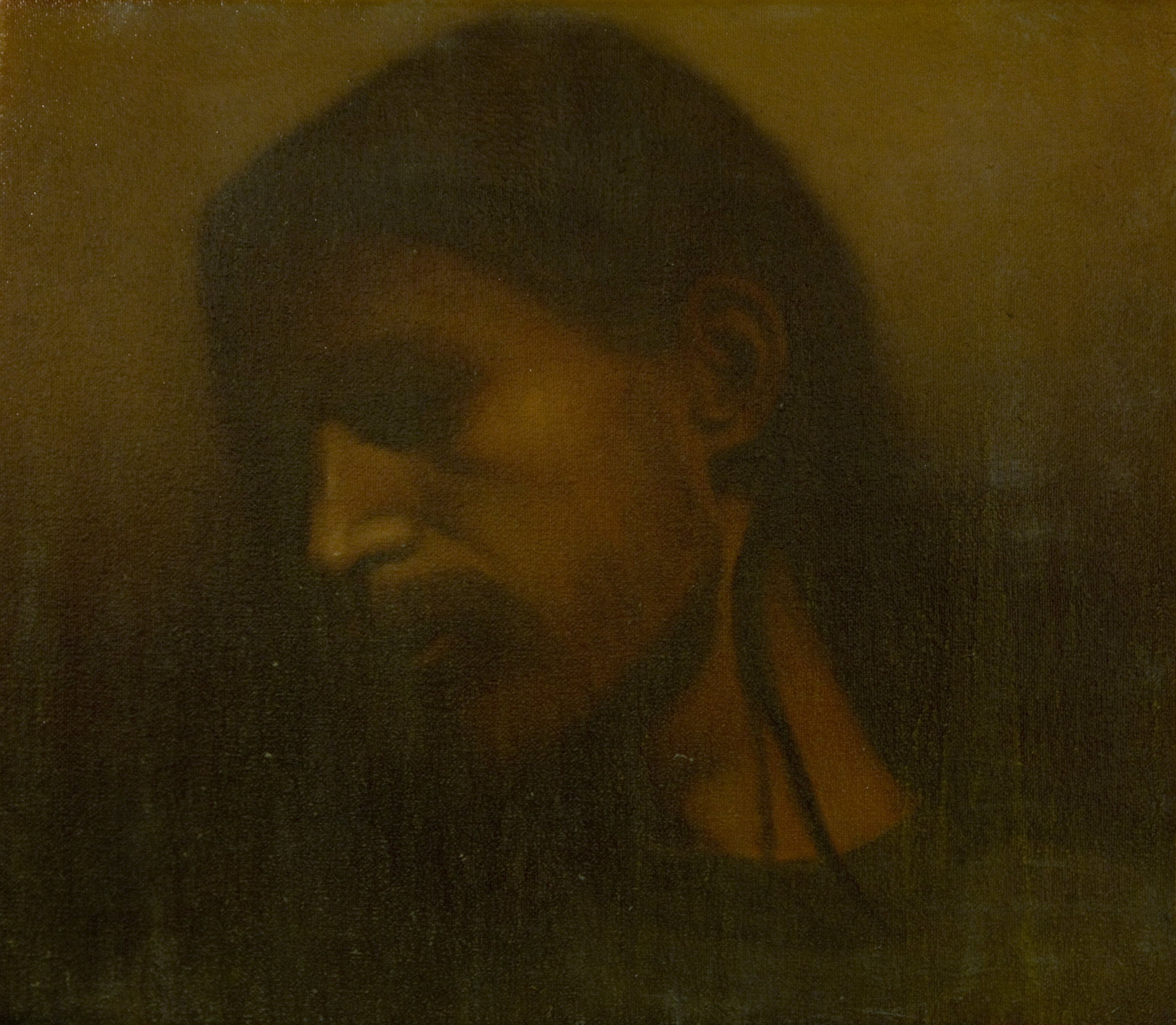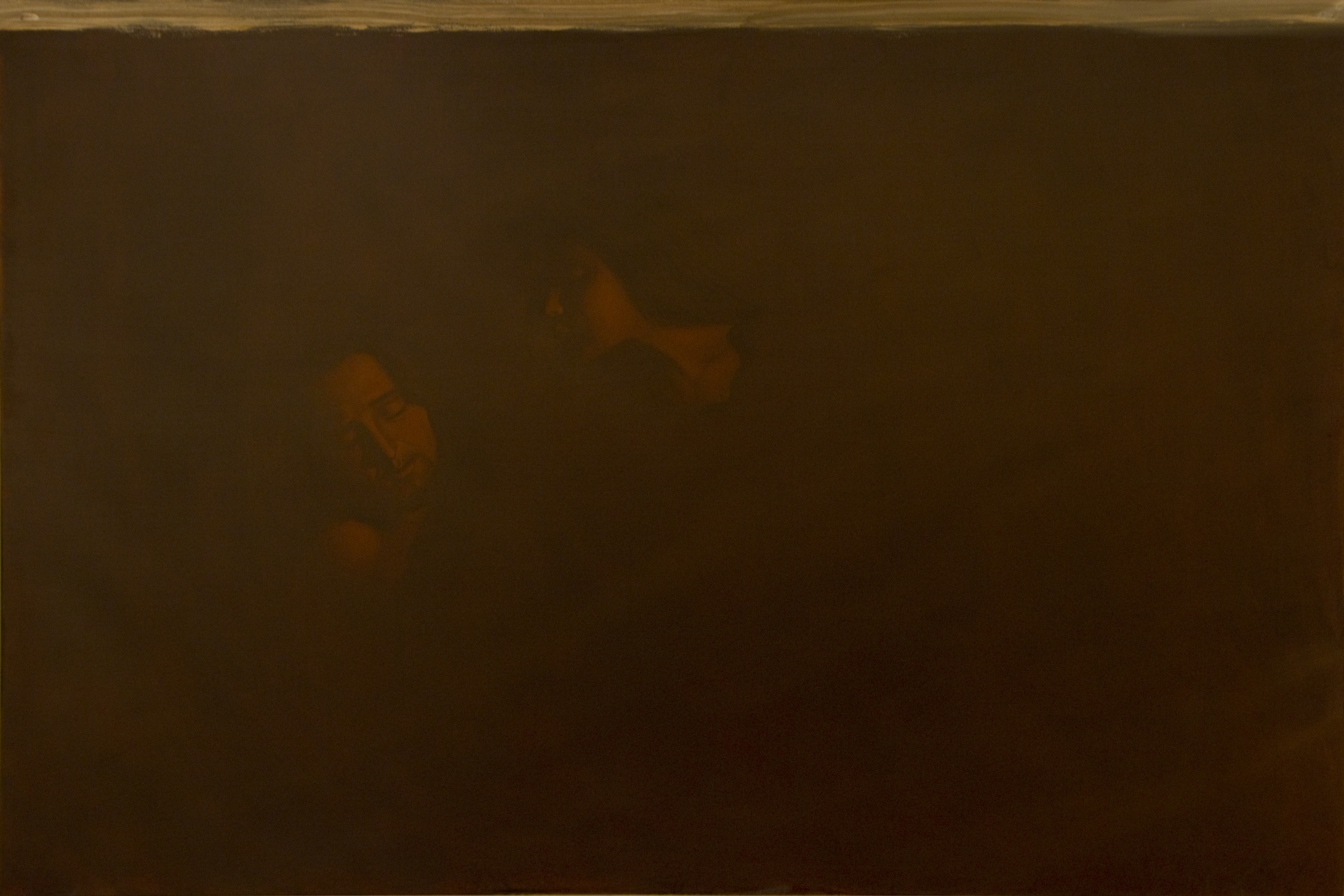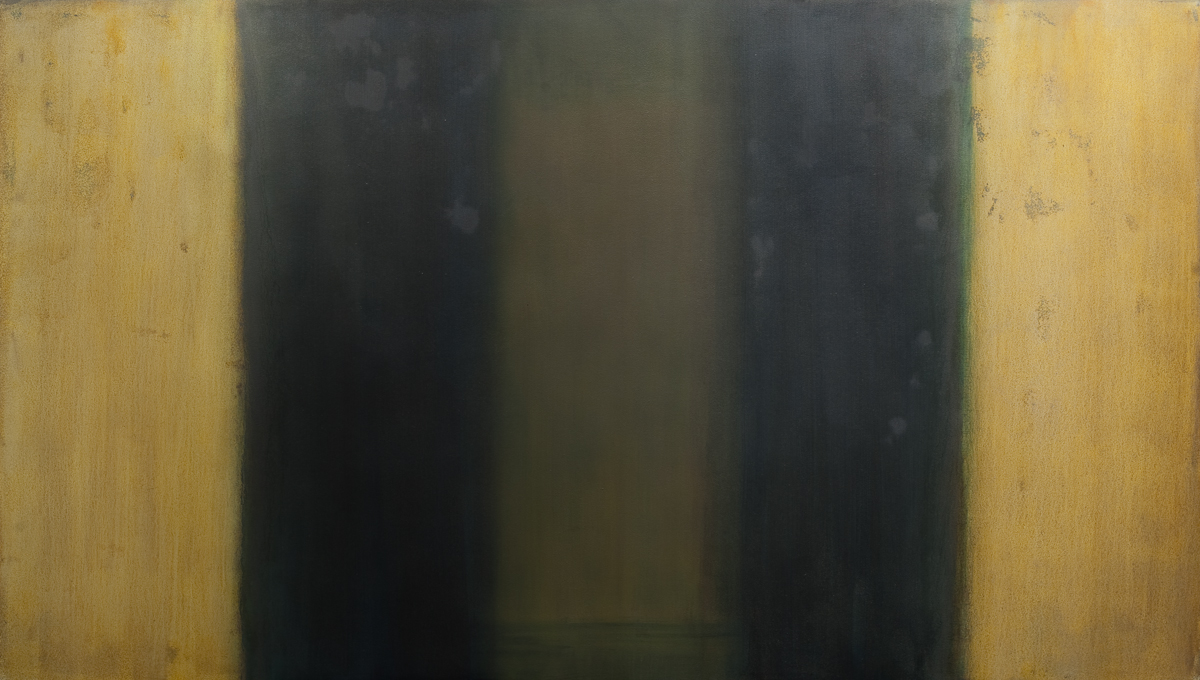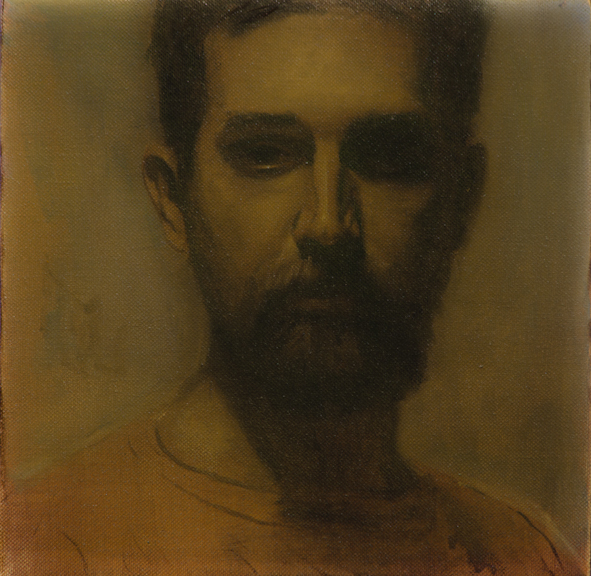In his show Painting is History Christian Worthington is looking at paint and paintings: their ability to withstand cultural and technological shifts throughout history, as well as their ability to evoke powerful emotional connections. Worthington is also exhibiting his process as a painter, displaying the stages and transformations that are essential to the completion of his work. The show presents the scope of painting from the sketches to the final glazes.
Worthington’s total focus on art history has made an enormous impact on his work. Worthington withdrew from art school early in favor of travelling to major art museums to study from master works in person. Previous collections have fluctuated between studies in classical images (reminiscent of DaVinci or Caravaggio) or studies in abstract color fields in the tradition of Abstract Expressionism. Worthington does not identify as an abstract expressionist but shares the movement’s concentration on tone, tension and color. Occasionally feeling at odds with contemporary tastes, Worthington strongly relates to the aesthetics of the old and modern masters.
Painting is History features large-scale works: some portraits, and some depicting only colour. Process plays a large role in this show and the works are displayed at various stages of completion. Worthington begins a painting unconsciously; at first generously applying layers of glaze and color, then stripping away the excess and sharpening the image. Showing pieces in development stages is aimed to engage the viewer with the tradition of painting and to draw attention to technique. It is difficult to see the lifespan of a painting in an impenetrable, finished work. Revealing the drawings and “underpaintings” that are crucial to preparation allows the viewer to witness Worthington’s skill at “building” a piece and engaging the viewer to participate visually. Re-creating the studio inside the gallery emphasizes the paintings as handmade “work” and distances the viewer from seeing them as lacquered merchandise.
Worthington’s exceptional technical ability and skill is obvious at every stage of the process. He displays incredible control in his lines and shadow within translucent, but lush, tones. Previous paintings have followed the baroque style of high-drama contrast between light and dark but this collection features a gentler clarity. His portraits are composites based on models but are not meant to be about a person – first and foremost they are about painting. Worthington has pushed the figure in the paintings very close to the picture plane, creating an intimacy with the viewer. This closeness is meant to be introspective and transportable; the figure holds your gaze and forms a connection. The abstract pieces remain true of Worthington’s admiration for the colors and action of the Spanish masters but he also looked to the composed solitude of Dutch painting. The feeling of being in a quiet room, being open and still, is evoked by the calm, steady focus of these paintings.
Painting is a part of history, which makes it difficult to be judged on its own – it comes with baggage. Worthington’s preoccupation with this history was previously something he felt he needed to obscure in order to contemporize. Art culture tends to create a “cultural supremacy orthodoxy” that pits “beautiful” art against the conceptual. Although he feels that contemporary art is susceptible to trends and fashions that can taint the purpose of an art piece, Worthington feels his paintings are contemporary interpretations rather than reproductions. Painting is History abandons any insecurity around his influences and wholly embraces them, this shift is apparent in the confidence of the collection. Worthington is conscious of the iconic images he emulates but feels he is asking a question by inserting them into 2012: is painting history? In the hands of a lesser artist this exhibition could be overshadowed by economic and political discourse, but Worthington’s undeniable talent and enterprise show he has serious consideration for painting’s past and present.
- Jessica Evans, 2012
RETURN TO CHRISTIAN WORTHINGTON
CONTINUE TO THREE
To request a catalogue of additional works, please contact us at info@gurevichfineart.com.
